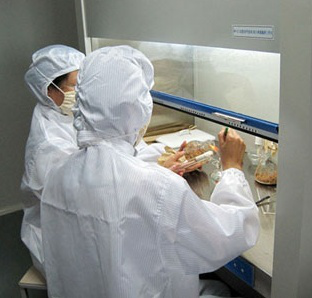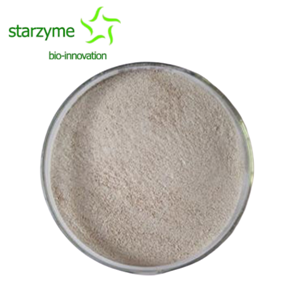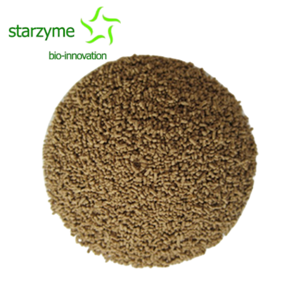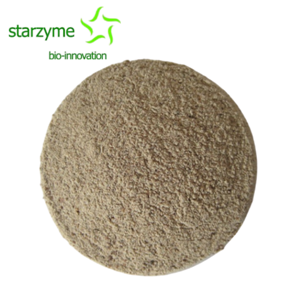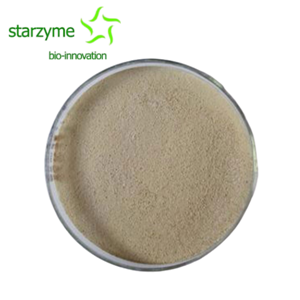The role of enzyme preparations in feed
The role of enzyme preparations in feed
The main function of enzymes in feed is to increase the proportion of digested nutrients in the feed and increase the utilization rate of the feed. Animal feed is mainly divided into cereals and meal. The presence of plant cell walls affects the digestion and absorption of nutrients. Naturally secreted enzymes such as pigs and poultry cannot decompose the cell wall, so only supplementing the corresponding enzymes in the feed can degrade them. Cereals such as corn and barley, as well as agricultural and sideline products such as wheat bran and cake, can be added to cellulase, hemicellulase and pectinase, and under the synergistic effect of several groups of enzymes, the cell wall of the plant can be destroyed and become soft. , Promote the digestion and absorption of the cell wall and its contents in the animal's gastrointestinal tract, thereby improving feed utilization. Xylanase is widely used in poultry diets. Studies have shown that xylanase can effectively promote the absorption and digestion of feed nutrients and improve poultry production performance. Xu Jun and others reported that the addition of 0.05% xylanase increased the weight gain of the chicks in the experimental group, while the feed-weight ratio decreased.
Eliminate anti-nutritional factors and promote animal growth
Anti-nutritional factors have anti-nutritional effects. Different feed ingredients contain different anti-nutritional factors. The way in which anti-nutritional factors produce effects includes the combination of anti-nutritional factors and nutrients in the gastrointestinal tract of livestock and poultry to prevent the absorption of nutrients; in addition, anti-nutritional factors directly inhibit the activity of endogenous enzymes that promote digestion and absorption of nutrients, feed The hemicellulose and pectin in the water will produce a viscous solution when dissolved in water, which increases the viscosity of the contents of the digestive tract, makes it difficult for nutrients and endogenous enzymes to diffuse, shortens the time for the feed to pass through the intestine, and affects the animal Digestion and absorption. Under the synergistic effect of complex enzymes, cellulose, pectin and glycoproteins can be degraded into monosaccharides and oligosaccharides, reducing the viscosity of intestinal contents, reducing the hindrance of such substances on digestion and utilization, and increasing nutrients Digestion and absorption. According to reports, the addition of enzyme preparations to the feed can also secrete endogenous enzymes, thereby improving the digestibility of the feed and promoting animal growth. The addition of xylanase can also promote fiber digestion in the rumen of ruminants. Gao Chunsheng and others reported that adding 0.05%-0.2% of xylanase to grass carp basic feeds found that grass carp increased weight gain, decreased bait coefficient, and increased digestibility of dry matter, crude protein, crude fat and crude fiber.
Broaden feed sources
The annual output of crop straws in the world is about 2-30 billion tons. China is a large agricultural country, and the crop straw resources are very rich. About 65%-80% of the dry matter in the crop straw can provide energy to the animals, and currently less than 10% is used as feed, most of the crop straw is still directly returned to the field. Or use it as a fuel, causing both waste of resources and pollution of the environment. Except for a few grass-fed livestock such as cattle that can digest cellulose in straw, no other livestock can use this part of the energy, and due to the presence of cellulose, it will affect the digestion of other nutrients, thereby reducing the nutritional value of feed. Cellulase is a general term for a class of enzymes that decompose cellulose. Its main function is to degrade NSP in the digestive tract of livestock and poultry, reduce the viscosity of intestinal contents, promote the absorption of nutrients, and reduce the diarrhea of livestock and poultry, thereby promoting the growth and improvement of livestock and poultry Feed utilization. Agricultural straw contains more NSP, mainly including arabinoxylan, dextran, galactose, pectin, cellulose and so on. Monogastric animals cannot decompose NSP, making it an anti-nutritional factor. Enzyme preparations can eliminate anti-nutritional factors in feed, improve feed utilization, and save feed resources.
Improve the viability of animal pups
In recent years, due to the low survival rate and slow growth rate of farming, the number of family farming has gradually decreased, and it has encountered great difficulties in promoting the production method of enterprise + farming. The application of enzyme preparations in feed can improve the digestion and dysplasia of immune organs caused by NSP, regulate the level of blood metabolism, and ultimately improve the production performance and survival rate of poultry. Adding xylanase to the wheat basic diet can increase the relative weight of the spleen, thymus and bursa of broilers, and the rate of dead panning decreased by 60%. Studies by Shi Baojun and others have found that adding xylanase to wheat-based basic diets can increase the daily weight gain of broilers by 2.38%, the feed-to-weight ratio decreases by 6.91%, and the survival rate increases by 6.47%.
